I’ve lived in Palm Beach County, Florida, for almost ten years now. But I don’t really know very much about palm trees. I mean, I can tell a sabal palmetto from a saw palmetto, and a royal palm from a Christmas palm, but that’s really about the limit of my knowledge. So I’ve decided to start a project of random photo safaris to take pictures of palm trees. The project may teach me something about photography, and it’s sure to improve my knowledge of palm trees!
For this inaugural post, though, rather than use all new photos, I’m going to have to raid my photo files. It takes a long time to build up enough photos to really show the full profile of a tree: you have to get it in flower, in fruit, young trees and old. It’s also nice to have more than just the plant itself to provide visual interest—the moon, some clouds, a nice waterway—something to show how the tree works in the environment.
Some basic information to begin with: Palms are in the family Arecaceae and they come in a fairly wide array of forms and growth habits:
- Tall and single-trunked, like the cabbage palm (the subject of today’s post)
- Shorter and multi-trunked, like the Areca palm (also known as Yellow Butterfly Palm, but no one really calls it that. One of the most common landscape palms in the county, it’s an introduced species that is actually native to Madagascar and the adjacent islands: Dypsis lutescens. See, common names have nothing to do with taxonomic names; the palm family is named Arecaceae, you’d think the Areca palm would be in the genus Areca, right? Wrong.)
- Recumbent or even belowground trunks, like the saw palmetto and the sabal minor palm.
Today’s post is about our state “tree,” Sabal palmetto, the cabbage palm:
The word tree is in quotes because, as many of you know, even though the Florida legislature that designated it our official tree back in 1953 obviously did not (or didn’t care, if they knew), the palm tree is not really a tree at all.
15.031 State tree.—
(1) The sabal palmetto palm, which is also known as the cabbage palm, and sometimes as the cabbage palmetto, a tree native to Florida, is hereby designated as the Florida state tree.
(2) Said state tree being now extensively used for commercial purposes, the provisions of this section shall not be construed to limit in any manner said use thereof in business, industry, commerce, for food, or for any other commercial purposes.
History.–ss. 1, 2, ch. 28126, 1953.
It doesn’t have bark, its stems are fibrous, not woody, and it’s more closely related to grasses than it is to trees. Nevertheless, it’s tall, and grows relatively straight, with a crown at the top, so, it must be a tree, right? Good enough for government work.
Some botanical description from Wunderlin & Hansen:
Leaf blades triangular, held in a V with a downward curve, the costa extending fully or nearly the length of the undivided portion of the blade, the hastula acute to attenuate, the margin with long free fibers. Stem usually erect, to 20 m tall; leaf blades with the hastula (4)10–12 cm long; fruit 9–10 (12) mm in diameter.
Got that? Good. Now explain it to me.
Well, I guess I’ll take a crack at it myself. First of all, what’s a costa? I think of it as a rib, and so I assume in botanical circles it means the rib of the leaf; in this case, of the frond. So far so good. Now, the hastula? That’s a little structure on some palms where the petiole (the “stem” of the frond) meet the leaflets (what most people would call the “leaves” of the frond):
Some writers (Stevenson) distinguish costapalmate palms like Sabal palmetto from palmate palms like Serenoa repens from fishtail leaflet palms from pinnate leaf palms (with 5 divisions of that last!) but I’m not quite hip to that distinction yet. For me the distinction between pinnate palms like the Cocoa palm and palmate palms like the sabals is enough, at least for now.
The “long free fibers” of the cabbage palm fronds are actually quite a good identifying mark; every cabbage palm I’ve seen has looked sort of “ragged” in this regard. And the abundance of those fibers indicates how much use this tree could be in weaving and thatching, for example. You wouldn’t even have to go to too much effort to thatch with this tree, because you can tie the fronds together with their own strings:
One of the interesting things about the cabbage palm is that its genus, Sabal, is largely tropical. There are 25 or so species in it, but our cabbage palm, S. palmetto, is almost entirely limited to an extratropical distribution. According to my Austin and Bass booklet, Coastal Hammock and Mangrove Guide,
It is unusual for a tropical genus to have a species such as this, which is almost restricted to the U.S., the northern part of the generic range.
Just goes to show how close Florida is to the tropics, and how diverse even “tropical” genera can be, that it grows mainly outside the tropics. It’s even the state tree of South Carolina!
Here is a young Sabal palmetto plant on the side of my house:
This is a young tree, not much more than 10 years old. Cabbage palms grow extremely slowly; on the order of one inch per year. So if you see a sixty-foot-tall cabbage palm, you know you’re looking at a really old plant:
Mature plants bear their flowers on 6-foot-long clusters, but the individual flowers, even if you’re not allergic, seem to be something to sneeze at—they’re only about 1/4-in wide. But you’d have trouble missing them, since they grow on a 6-foot-long stalk! The fruits are similarly tiny, but can be abundant, and they provide a valuable food resource for wildlife. You can see the fruits on their long stalks in this detail from the previous shot:
In fact, much of the plant can be exploited as a food source: the flowers make fine honey, if you’ve got an apiarist in the neighborhood; the fruits were eaten by Florida’s native populations and the native Americans that supplanted them as well; the heart of the tree (hearts of palm, swamp cabbage) is famous as a delicacy, although it’s a shame, because you have to kill the tree to eat its heart. Slow-growing mature cabbage palms aren’t cheap, so it’s not just a shame, it’s an expensive shame!
Full disclosure, though: I’ve tasted this “millionaire’s cabbage” myself. At the end of my last Florida Master Naturalist course, two of the students brought in a Florida cracker–style stew that had hearts of palm in it. It was pretty tasty. But what made it really cool was that they videotaped the source of the food. They had to take out a couple of palm trees to clear some land on their ranch, and they decided to make sure they didn’t waste the tree. They chainsawed it down, removed the crown, and hacked away to get at the tender growing stem, and then they cooked it up right proper. Yum!
But it’s not a very good idea to go around taking out cabbage palms unless you really need to. For one thing, according to Osorio, it’s illegal in Florida to harvest cabbage palms for their hearts now, although I’ve not been able to verify this. Even if it’s not illegal, it’s certainly an expensive salad! For another, this is one of the most useful trees to wildlife, not just for food, but for shelter. The numerous “boots” of the tree provide roosting places for birds:
And starting places for epiphytic plants:
Fronds provide hiding places for frogs (although these are on a saw palmetto, not a sabal palmetto):
Hollow trunks provide nesting places for cavity-nesting birds and mammals:
I’ve even heard of some of Florida’s bat species (Lasiurus intermedius, Northern yellow bat) roosting in cabbage palms, although I have yet to see this for myself…
They also make pleasing sights in natural areas:
For its beauty, its versatility, and its value to wildlife, I’d have to say that, by whatever name you know it (cabbage palm, cabbage palmetto, sabal palm, palmetto palm), Sabal palmetto is one of the best native Florida plants you can have! It’s certainly one of my favorites.
References
Austin D.F., S. Bass, and P. Honeychurch. 1997. Coastal hammock & mangrove guide: a pocket guide to the common trees, shrubs, and vines of S.E. Florida’s hammock and mangrove communities. West Palm Beach, FL: Gumbo Limbo Nature Center of South Palm Beach County, Inc.
Osorio R. 2001. A gardener’s guide to Florida’s native plants. Gainesville: U of Florida P.
Riffle, R.L. 2008. Timber press pocket guide to palms. Portland, OR: Timber P.
Stevenson G.B. 1996. Palms of south Florida. Gainesville: U of Florida P (orig. publ. 1974).
Wunderlin R.P. & B.F. Hansen. 2003. Guide to the vascular plants of Florida. 2d ed. Gainesville: U of Florida P.


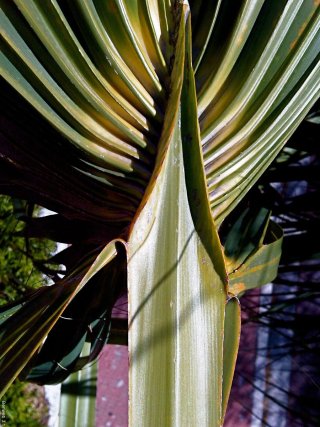
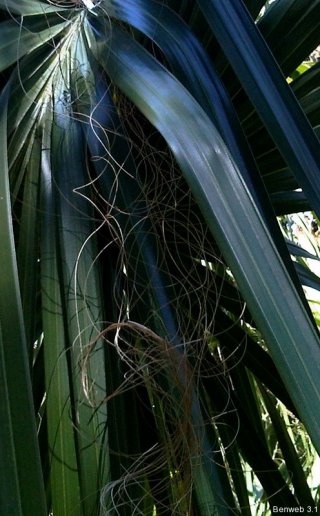

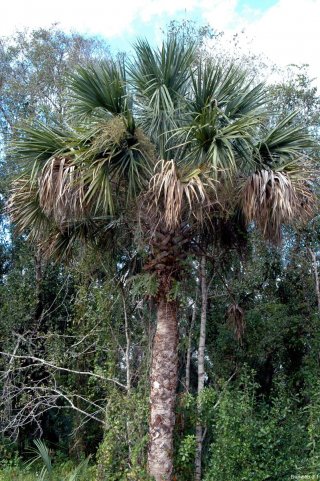
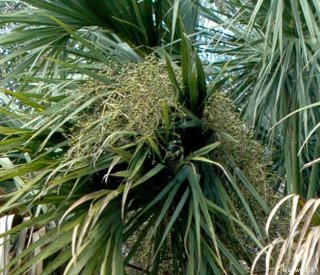
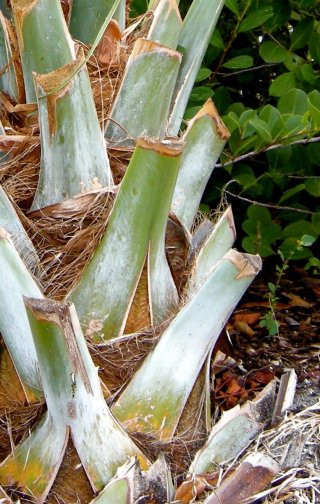
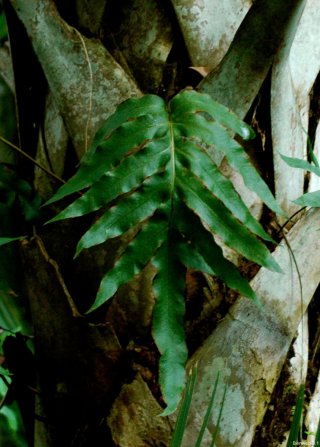
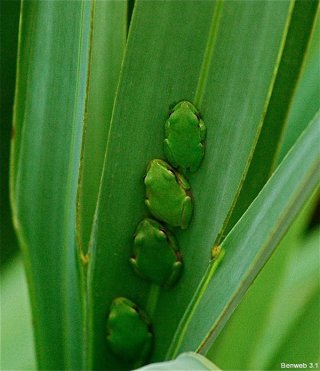

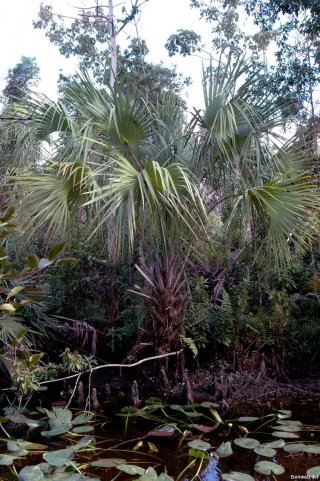
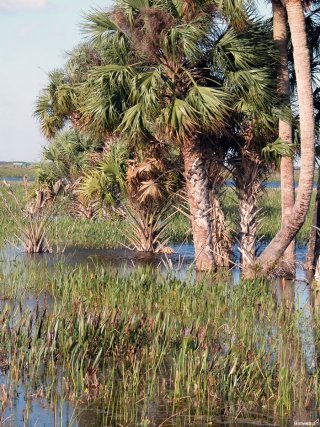
thanx for this!! i’m presently trying to decipher the species of a trunked palm at avery island, louisiana (a salt dome “island” amidst the marshes of the south-central louisiana coast….generally, botanist concur that re: the genus Sabal, only S. minor occurs in louisiana; and that some S. minors are known to have trunks up to ca. 15’……re: the Sabals that i’m seeing at avery island, leaflets have fibers hanging off the margins (not good for S. minor; good for both S. palmetto & S. mexicana, the latter which occurs naturally from brownsville, tx up through corpus christi, at least)……i’ve yet to measure hastula & fruit diameters on these mystery palms….would u have any comments re: field characters on S. palmetto vs. S. minor?
It’s supposed to be pretty easy to tell S. minor from S. palmetto: S. minor should have round (orbicular) leaf blades, while S. palmetto (and S. etonia) has leaf blades triangular. In addition, the costa on S. minor is only about 1/4 the length of the undivided portion of the blade, while in S. palmetto (and, again, S. etonia), the costa is about the same length as the undivided portion of the blade.
The most obvious distinction is supposed to be that S. minor leaves lack the prominent midrib of S. palmetto.
But you’re right, S. minor should NOT have long free fibers; that’s puzzling.
Trunk length varies by genetic origin; if it’s a true descending grade from the Texas trunks that reach 5 meters tall to the Florida trunks that rarely exceed 2 meters, Avery Island might indeed harbor some “Texas-style” trunks of S. minor.
Good luck!